Garima Gupta is the artist & explorer at Project Bambai, Garima Gupta speaks of her fascination with Charles Correa's designs for Mumbai's landmark, as she attempts to retrace his ideas and his vision
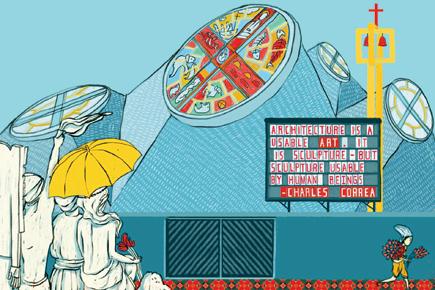
Project Bambai
"If you walk around looking down, you can have endless arguments with the pavements. But look towards the sky, and the city will put a smile on you face." A friend gave me this piece of advice years ago, and it often comes back to my mind. A little bit of sky above is always a good sign. More so, in Mumbai, where the blue above is shrinking by the day.
ADVERTISEMENT
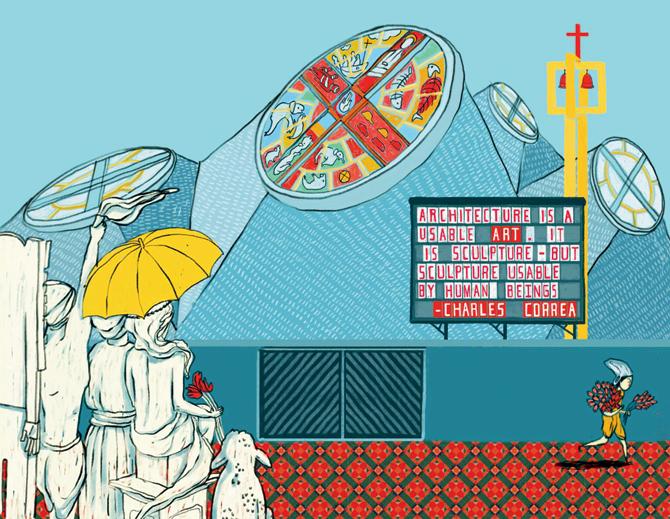
Project Bambai tells its stories through city’s famous statues. This year, Project Bambai and Mumbai Art Map (issue 19) bid farewell to iconic architect Charles Correa. The illustration depicts the Our Lady of Salvation Church at Dadar that was designed by Charles Correa. Illustration Courtesy/Garima Gupta
The Our Lady of Salvation Church (popularly referred, as Portuguese Church) is a famous landmark in Dadar and the rest of Mumbai. Every Sunday, as the church bells ring in slow harmony, a large wave of people slowly disappears into this peculiar building. Its unflattering facade and oddly tall twin bells never reveal the oasis inside to anyone who reads this book by its cover. But those who have been here know it as Charles Correa's Open to Sky marvel.
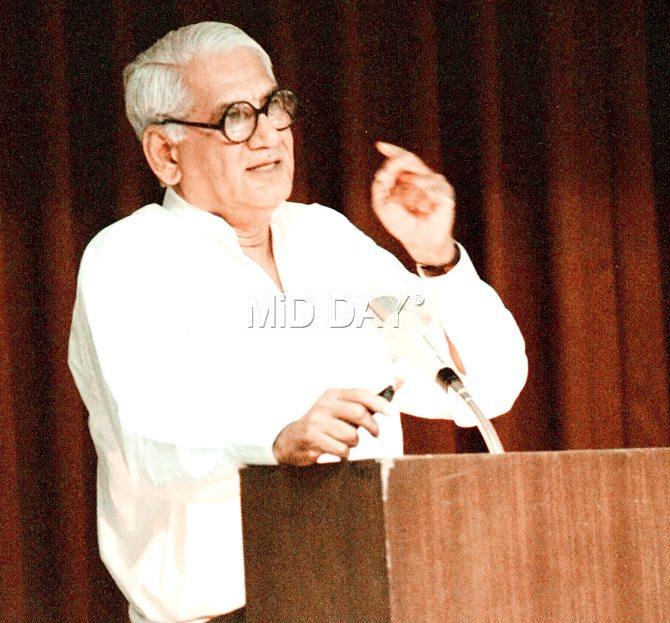
Charles Correa at an event in Mumbai
See and gaze
The structure is a beautiful manifestation of his open to sky philosophy, where the concrete recedes at intersections, letting the eye wander into the sky. Correa was a practitioner of functional spaces, and his work respected the boundaries set by the climate of a place. It's not surprising then that the large doors of the prayer halls sit neatly on either side of the pillars, channelling the air for excellent ventilation. The interlocking courtyards and covered concrete shells provide an open environment, and also extend the space for a larger congregation.
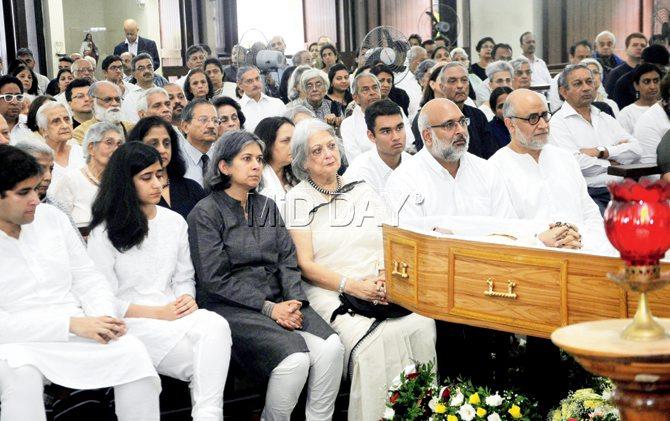
Family members of Charles Correa at his funeral held at Our Lady of Salvation Church, Dadar on June xx, 2015. Pics/Satyajit Desai
Inside, the church design skips all the authoritative ingredients of a holy shrine. There are no towering altars, arched windows or overpowering columns. In fact, its bare minimum demeanour is the most beautiful feature. The first completed structure in 1977 had a stark and exposed concrete environment for worship, which was later, painted due to discolouration.
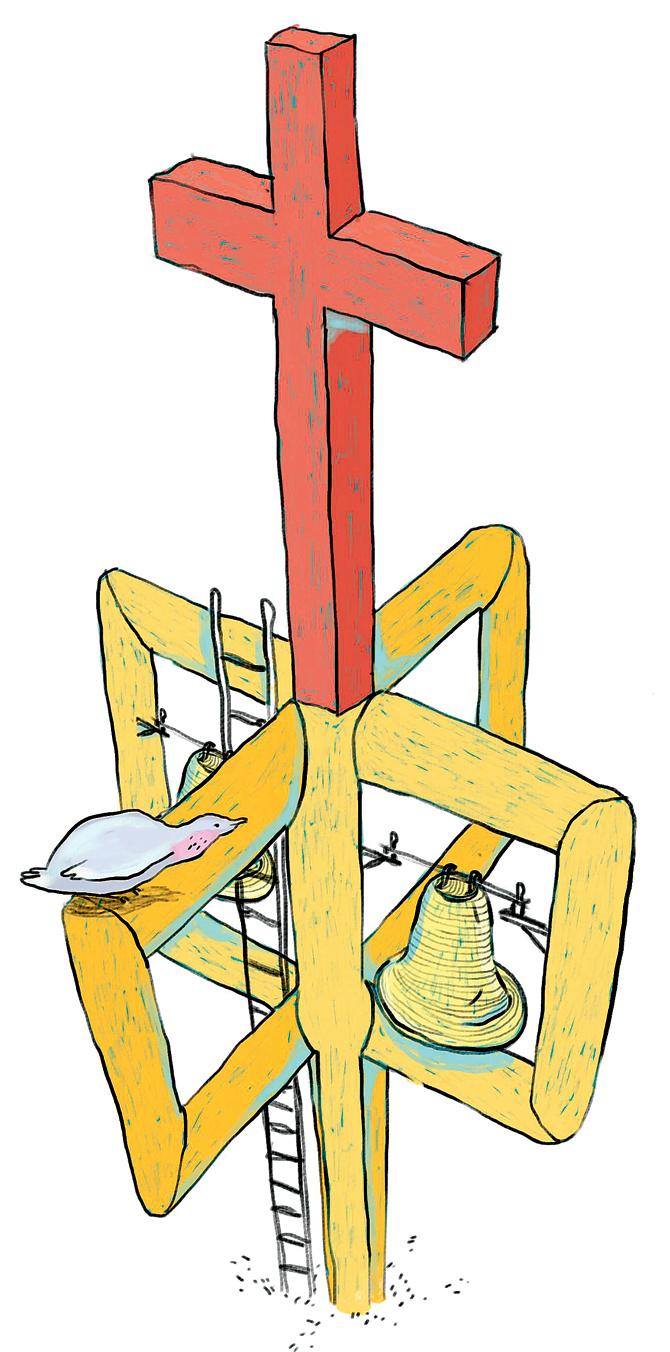
Bells: The 19th century Baroque Portuguese style cross preserved and retained inside the church compound
These concrete walls converge upward like a pyramid, leading the eyes straight to a single point where they meet the skylight, much like the oculus at Pantheon. Light filters here through a glass panel, which depict Biblical stories hand painted by MF Hussain in his whimsical style. Hussain later dedicated the fresco to Cimabue, the fountainhead of Italian renaissance painting.
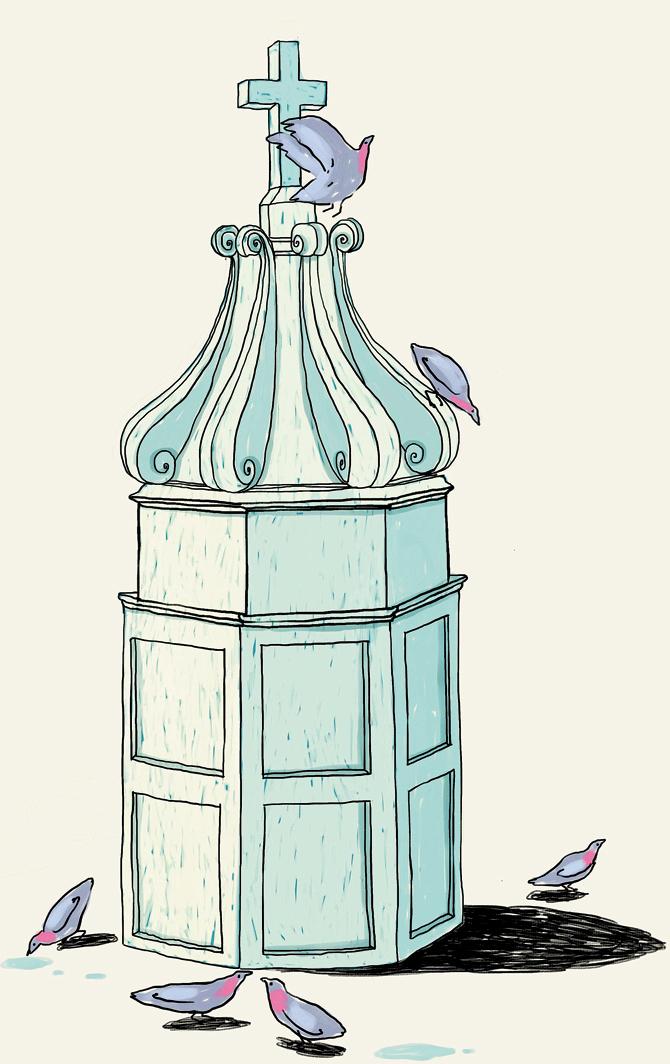
Mortuary memorial to a Baretto. Located outside the church, the text on the plate refers to the area by it's older name, 'Mahim'. Art/Garima Gupta
Divine and design
The Church site is believed to be 400 years old, and is currently in its fourth avatar. In its early years, its unconventional design displeased many. But over time, the devotees have found an exceptional sense of peace in this quaint church in Dadar. Correa was always known to be ahead of his time. But his architectural sensibilities were far more deep-rooted than otherwise assumed. As Mumbai bid goodbye to this visionary in the Portuguese church last month, we hope he will find solace in the blue sky.
Log on to: www.projectbambai.wordpress.com
 Subscribe today by clicking the link and stay updated with the latest news!" Click here!
Subscribe today by clicking the link and stay updated with the latest news!" Click here!






